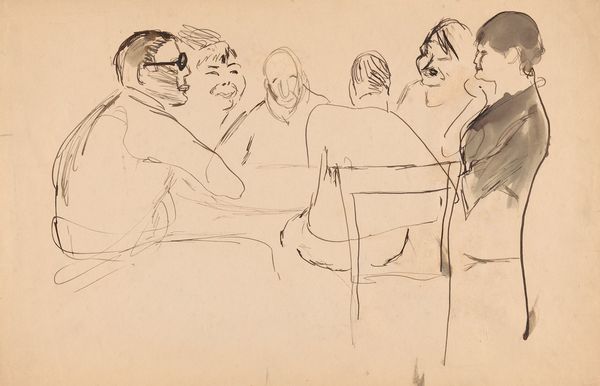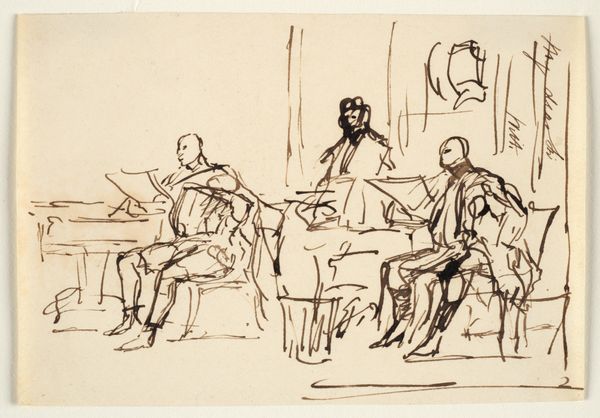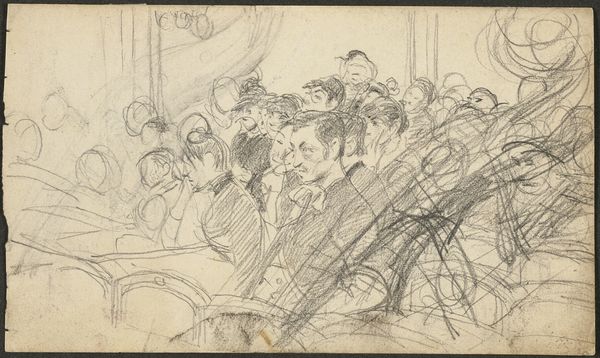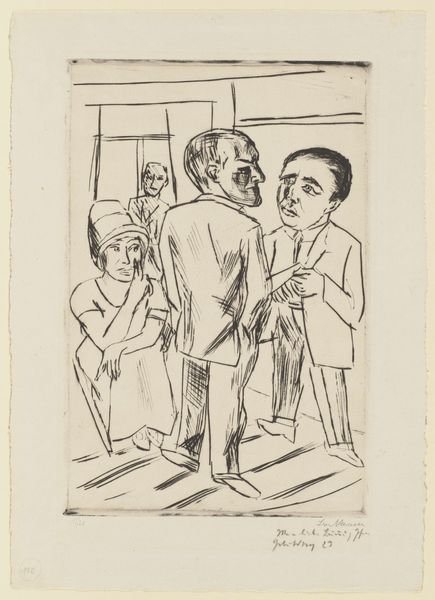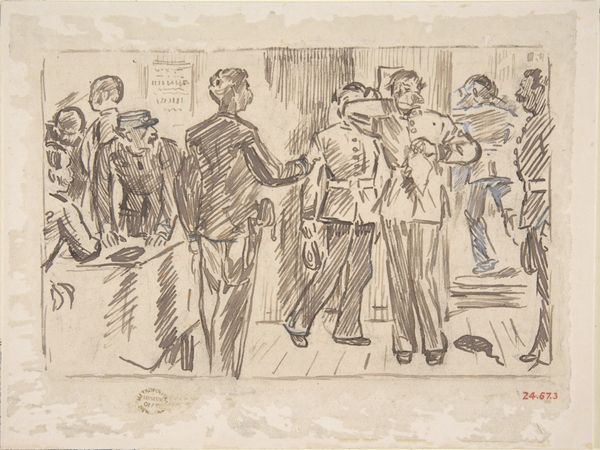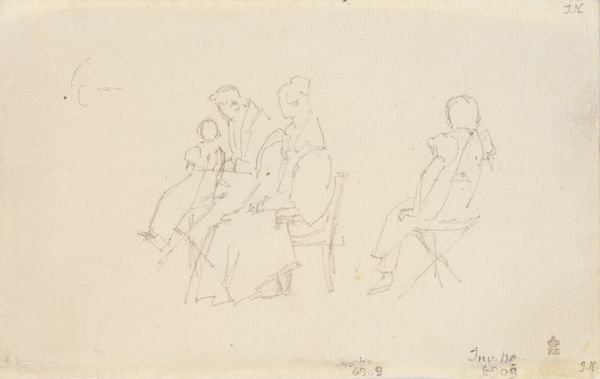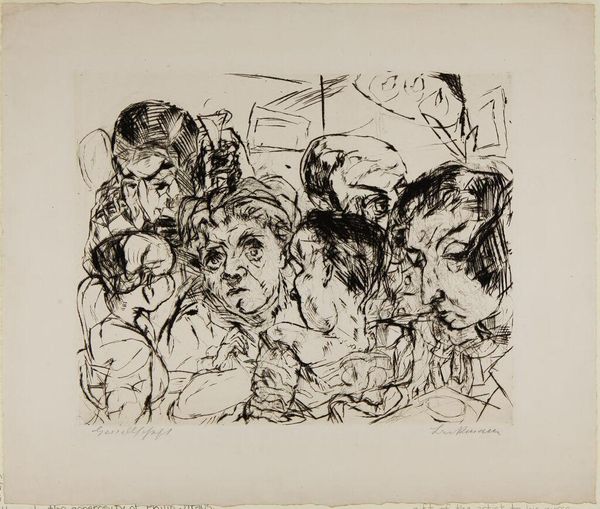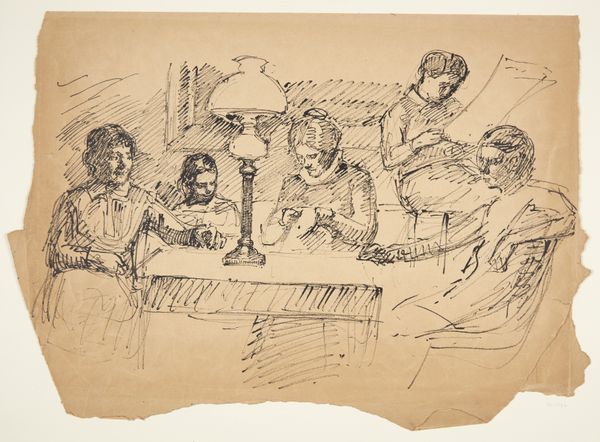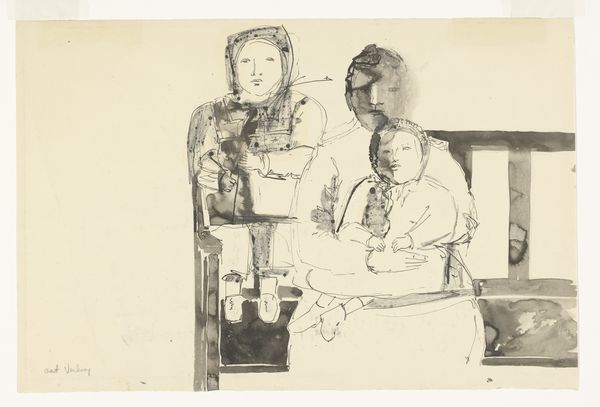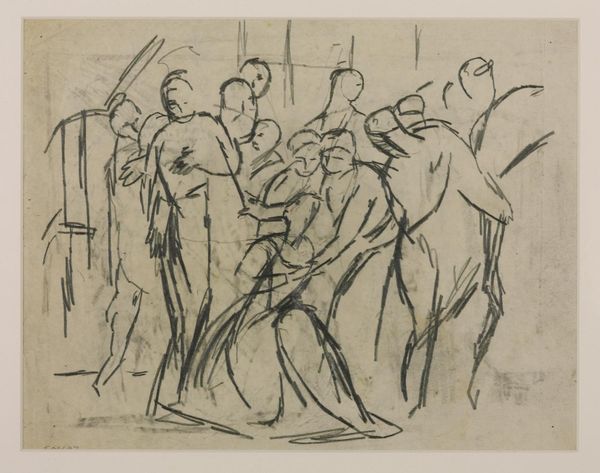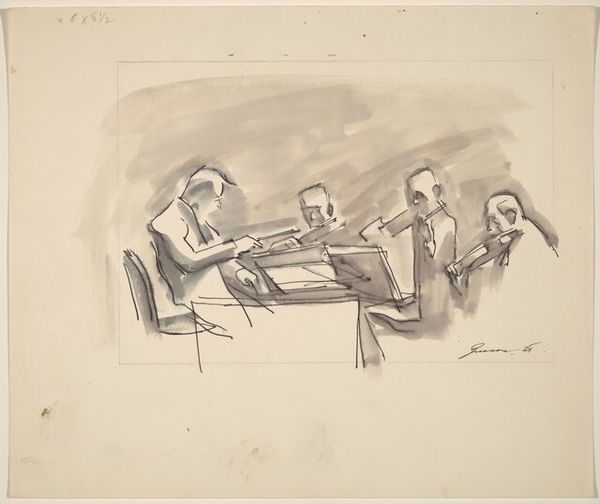
drawing, ink, indian-ink
#
portrait
#
17_20th-century
#
drawing
#
imaginative character sketch
#
pen sketch
#
personal sketchbook
#
ink
#
german
#
idea generation sketch
#
sketchwork
#
ink drawing experimentation
#
indian-ink
#
group-portraits
#
pen-ink sketch
#
expressionism
#
sketchbook drawing
#
storyboard and sketchbook work
#
sketchbook art
Copyright: Public Domain
Editor: This drawing, "Die Administratoren des Städelschen Kunstinstituts," is by Jakob Nussbaum. It looks like ink on paper, right? It’s... unsettling. All these figures crammed together, sketched with such nervous energy. It feels like we're peering into some secret meeting. What jumps out at you about this piece? Curator: The unease you sense speaks volumes about the changing social landscape of the early 20th century. Think about the context: World War I had just ended, institutions were in flux, and Germany was grappling with profound social and economic upheaval. The Städel Museum, like many cultural institutions, was not immune to these pressures. Notice how the composition lacks idealized forms; these administrators aren't presented as pillars of society but rather as figures rendered with a critical, almost caricatured, eye. Editor: So, the expressive style reflects societal anxieties? It's almost like their status is being questioned? Curator: Precisely. Nussbaum's technique underscores this. The nervous, agitated lines and the way he distorts perspective… it suggests a certain skepticism towards authority and the established order. He seems less interested in documenting a formal portrait and more in exploring the psychological undercurrents within this group. Does the presence of a board influence what artwork is exhibited in the galleries and acquired into a permanent collection? Editor: I never considered that the image of authority could be so raw. Usually, these portraits would highlight power. Curator: That's the key here. By portraying these figures with such starkness, Nussbaum critiques the very idea of institutional power, prompting us to consider the social and political forces that shape art and its reception. He turns the seemingly stable and official into something far more complex. Editor: So, by looking at how Nussbaum depicts authority, we gain insights into his historical perspective on these institutions. Thank you! Curator: Indeed. This work serves as a reminder that art is not created in a vacuum, but rather it's always intertwined with broader social, cultural, and political forces.
Comments
No comments
Be the first to comment and join the conversation on the ultimate creative platform.

